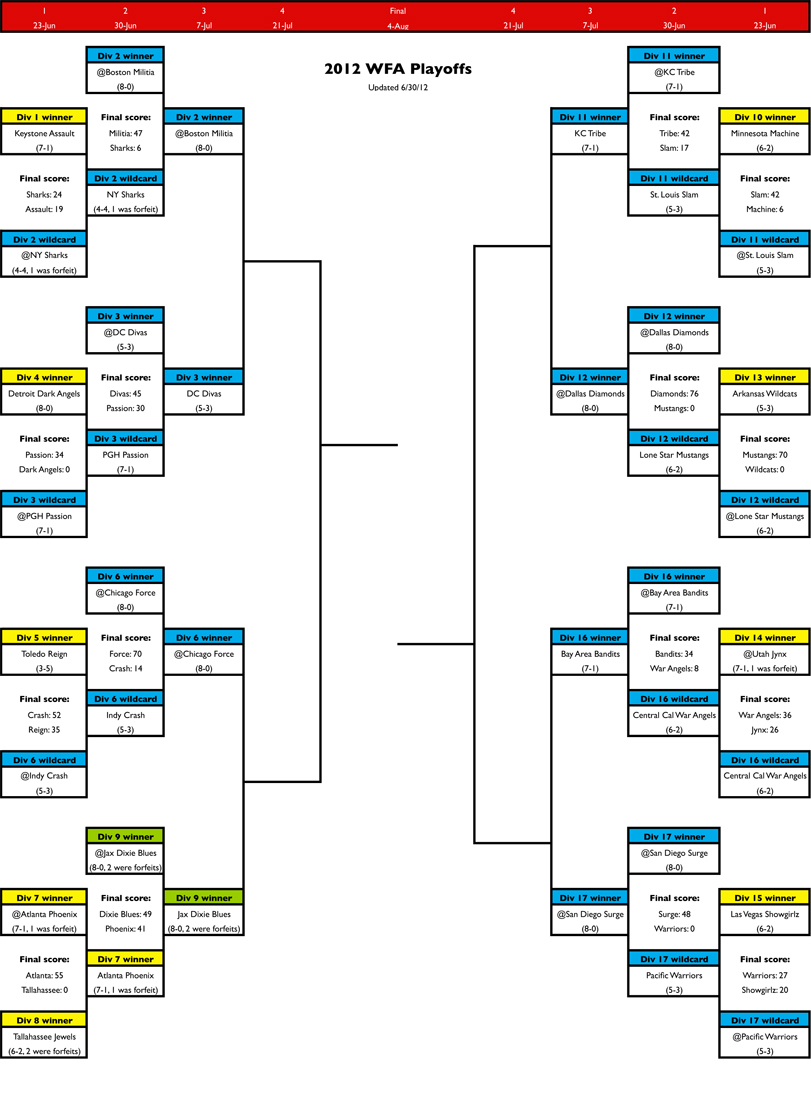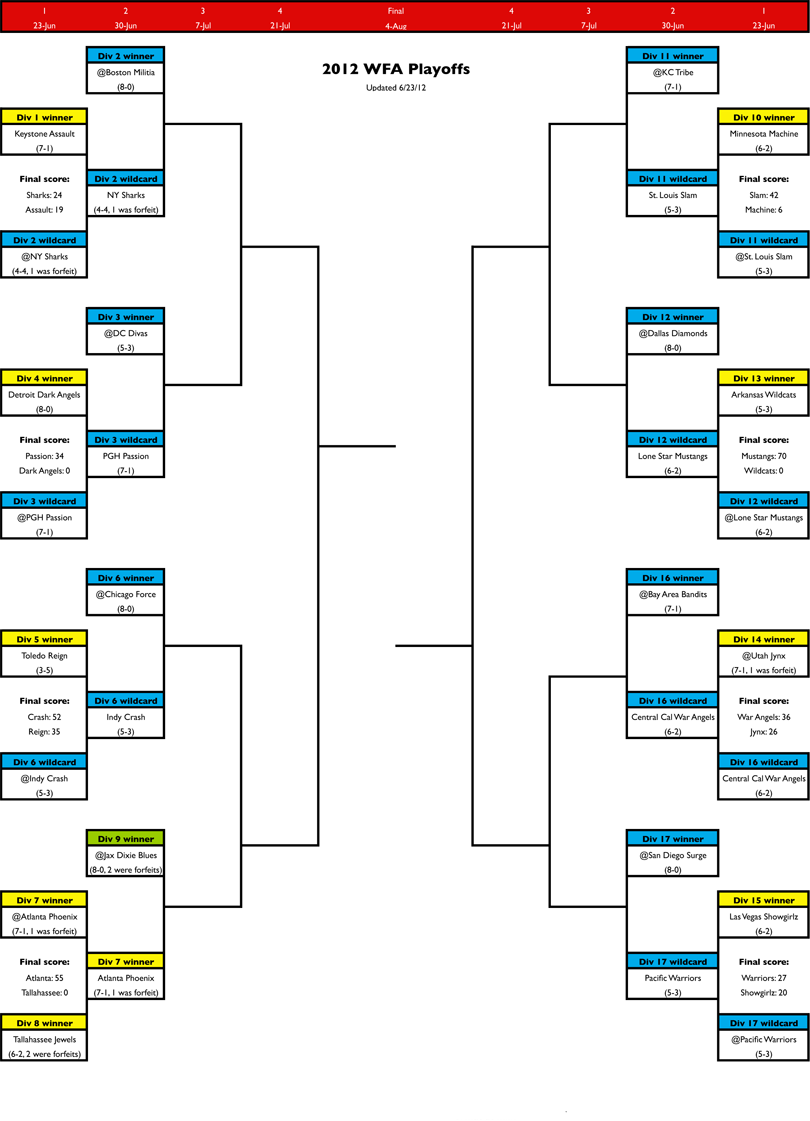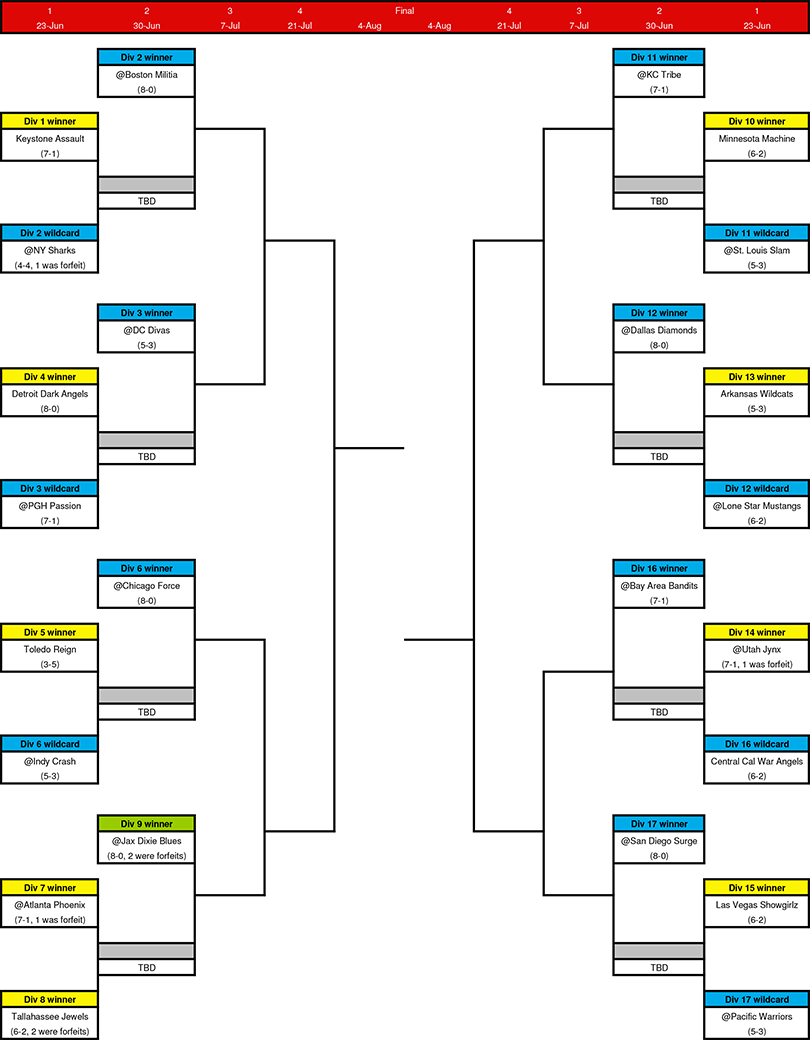Your Militia Cheerleader is, by trade, a data analyst. As such, this is one of my favorite quotes ever (it’s attributed to Mark Twain): “There are three kinds of lies: lies, damn lies, and statistics.”
I know very well that numbers can be manipulated, and the accuracy of any argument based on numbers is only as strong as the integrity of the person putting the argument together. That said, I think stats are wicked hot.
I was quite sad when the Massey Ratings site stopped analyzing women’s tackle football; I don’t know why that change was made but I felt like it was a real loss for the sport. So I was really psyched when I found out that someone had taken it upon themselves to calculate current ratings for the WFA using Massey’s formula – I’ve posted them here with express permission.
The Massey system is explained for laymen here and explained for data geeks here. Basically, it takes game results and uses them to predict the probable winner and margin of victory for the theoretical match-up of any two teams. For example, the ratings before Round 1 of the playoffs (I haven’t posted those but can if people are interested) had the Pittsburgh Passion’s rating at 46.843 and the Detroit Dark Angels at 19.649. Home field advantage was calculated at 3.319, so you take the difference of the ratings and add in PGH’s home field advantage and the data says that the Passion should win by 31 points. They did, in fact, win by 34 points (which is pretty damn close to predicted, all things considered).
The ratings correctly predicted the winner of all eight Round 1 games. Additionally, with a few exceptions the ratings also correctly predicted the comparative order of point differentials – that is to say, both the Passion and the Sharks should have won their games, but the Passion should have won by more than the Sharks did (34 points and less than 1 point, respectively – remember, these are theoretical computations, not dictations of actual scores). And guess what – they did! (31 points and 5 points, respectively).
So what, you say? Plenty what, I say! First, stuff like this is prime fuel for time-wasting arguments about the accuracy and validity of predictive models. Second, it’s pretty-looking. Third, it allows for tidbits like this: I calculated the total predicted point differential of all the games in Round 1 and then did the same for the upcoming Round 2 games. The total predicted difference is almost 20% higher in the Round 2 games than the first round – which really just supports what we all already know: lots of Round 2 and Round 3 games are far less competitive than regular season and Round 1 games. War Angels at Jynx? Interesting game. Crash at Force? Major snoozefest.
So just in case there are some of you who don’t enjoy playing with Excel as much as I do, I have gone ahead and posted the numerically-predicted outcomes of the Round 2 games scheduled for this upcoming Saturday. What do you think? Do you see any upsets coming? Any qualitative factors that might outweigh the quantitative ones? As ever, I’d love to hear your thoughts.
Predicted outcome of Round 2 games using Massey Ratings
- Chicago Force over Indy Crash by 65 points
- Dallas Diamonds over Lone Star Mustangs by 57 points
- Boston Militia over NY Sharks by 43 points
- San Diego Surge over Pacific Warriors by 42 points
- KC Tribe over St. Louis Slam by 19 points
- DC Divas over Pittsburgh Passion by 11 points
- Jacksonville Dixie Blues over Atlanta Phoenix by 8 points
- Bay Area Bandits over Central Cal War Angels by 3 points
Read More/Comments




